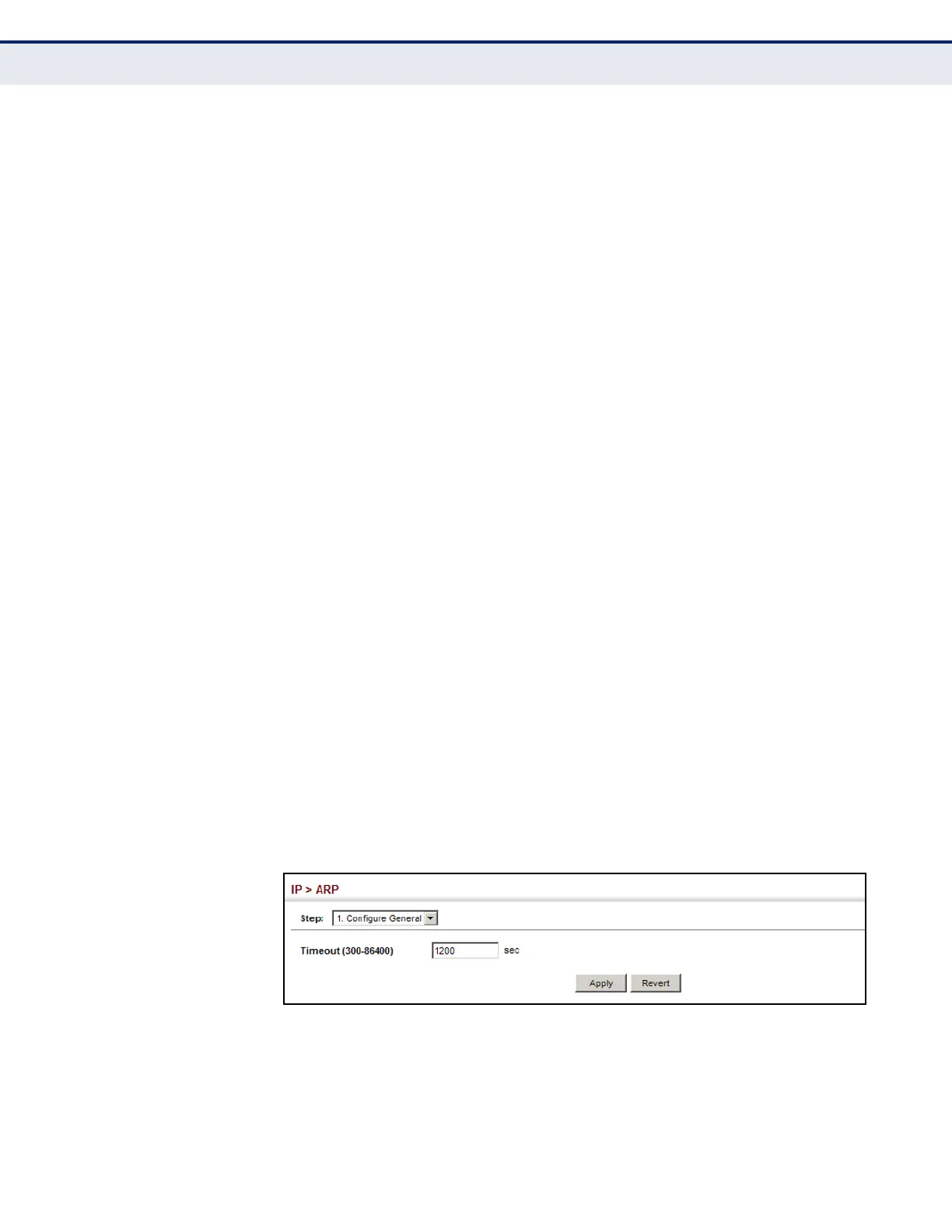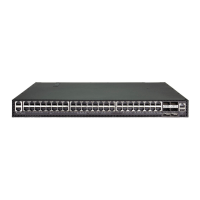C
HAPTER
15
| IP Configuration
Address Resolution Protocol
– 563 –
switch will be able forward traffic directly to the next hop for this
destination without having to broadcast another ARP request.
Also, if the switch receives a request for its own IP address, it will send
back a response, and also cache the MAC of the source device's IP address.
SETTING THE
ARP TIMEOUT
Use the IP > ARP (Configure General) page to specify the timeout for ARP
cache entries.
CLI REFERENCES
◆ "arp timeout" on page 1395
PARAMETERS
These parameters are displayed:
◆ Timeout – Sets the aging time for dynamic entries in the ARP cache.
(Range: 300 - 86400 seconds; Default: 1200 seconds or 20 minutes)
The ARP aging timeout can only be set globally for all VLANs.
The aging time determines how long dynamic entries remain in the
cache. If the timeout is too short, the switch may tie up resources by
repeating ARP requests for addresses recently flushed from the table.
When a ARP entry expires, it is deleted from the cache and an ARP
request packet is sent to re-establish the MAC address.
WEB INTERFACE
To configure the timeout for the ARP cache:
1. Click IP, ARP.
2. Select Configure General from the Step List.
3. Set the timeout to a suitable value for the ARP cache.
4. Click Apply.
Figure 324: Setting the ARP Timeout
DISPLAYING
ARP ENTRIES
Use the IP > ARP (Show Information) page to display dynamic entries in
the ARP cache
.
The ARP cache contains entries for local interfaces, including
subnet, host, and broadcast addresses. These entries are dynamically
learned through replies to broadcast
messages.

